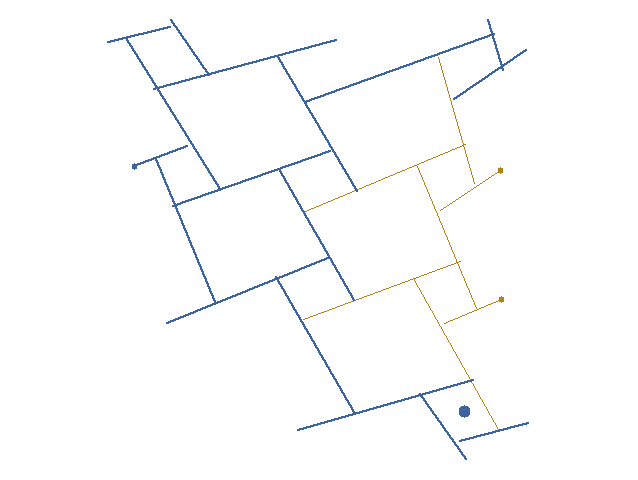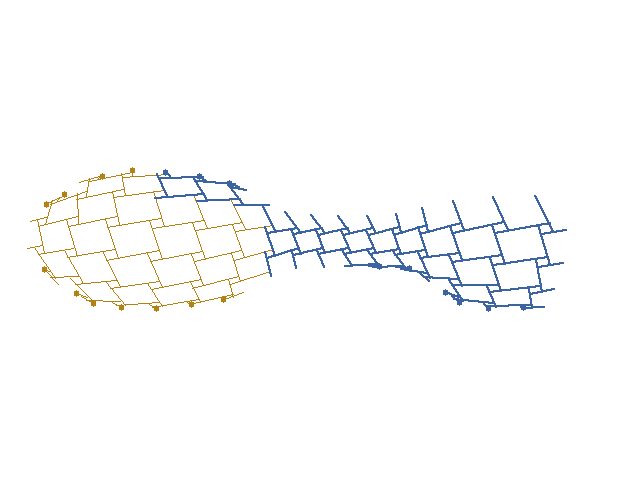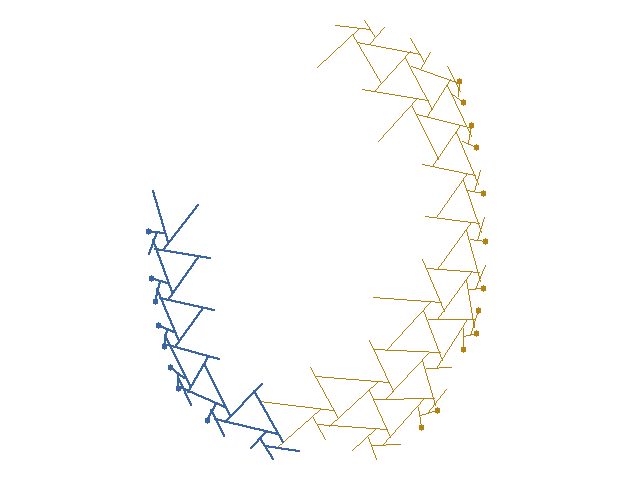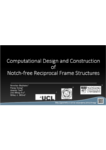Computational Design and Construction of Notch-free Reciprocal Frame Structures
- Nicolas Mellado1
- Peng Song2
- Xiaoqi Yan3
- Chi-Wing Fu3
- Niloy J. Mitra1
1University College London,
2University of Science and Technology of China,
3Nanyang Technological University.
Advances in Architectural Geometry (AAG 2014)
Abstract
A reciprocal frame (RF) is a self-standing 3D structure typically formed by a complex grillage created as an assembly of simple atomic RF-units, which are in turn made up of three or more sloping rods forming individual units. While RF-structures are attractive given their simplicity, beauty, and ease of deployment; creating such structures, however, is difficult and cumbersome. In this work, we present an interactive computational framework for designing and assembling RF-structures around a 3D reference surface. Targeting notch-free assemblies, wherein individual rods or sticks are simply tied together, we focus on simplifying both the process of exploring the space of aesthetic designs and also the actual assembly process. By providing computational support to simplify the design and assembly process, our tool enables novice users to interactivity explore a range of design variations, and assists them to construct the final RF-structure design. We use the proposed framework to design a range of RF-structures of varying complexity and also physically construct a selection of the models.
Method

Figure 2: (Top) Top view of the PEANUT model; (bottom) two different construction strategies, where RF-units are added from a starting point either gradually (GRAD strategy, following n-rings and counter-clockwise order), or by groups (GROUP strategy). The model on the top uses orthographic projection, and successive steps are visualized in gold, blue and green.

Figure 3: Proposed building strategies. Approaches (a) and (c) use the cost function for verification and to suggest support pillars; while greedy approaches (b) and (d) use the cost function to also determine the assembly order (see model BritishMuseum model in dataset)
Results

Figure 4: Assembly process of five different RF-structures with different shape and RF-units (from left to right).
Animated construction sequences, view from the top (click for fullscreen and parameters). Pillars are shown as black dots, contact point of supporting rods as colored dots. Structure descriptions and construction sequences can be downloaded for examples marked with *, see Links below):









